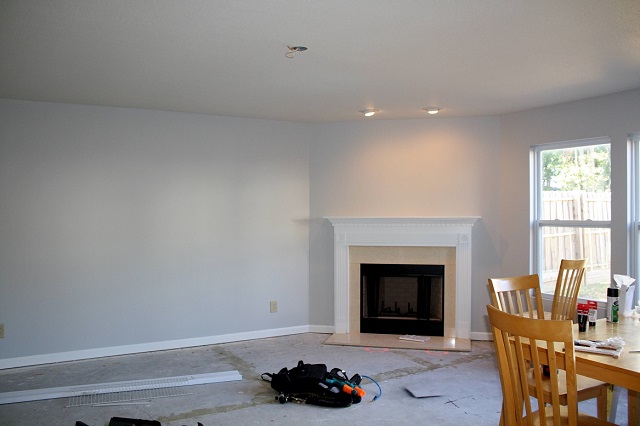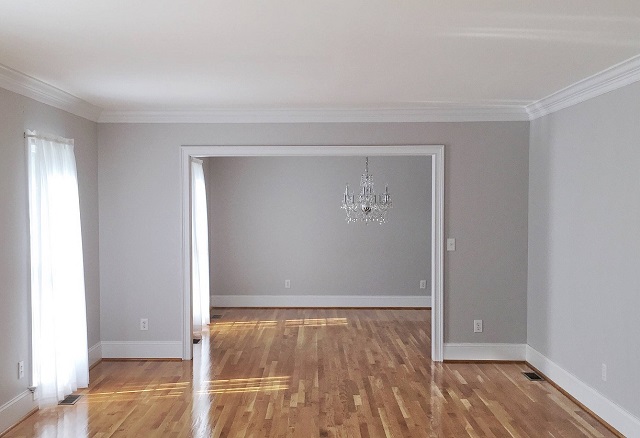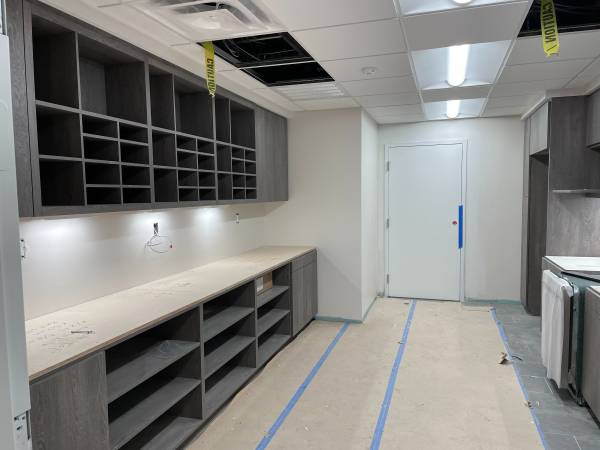Table of Contents
Skim Coating for Achieving a Flawless Surface
Skim coating is a technique of surface preparation, especially when aiming for a flawless finish. By applying a thin layer of skim coat to a wall or ceiling, imperfections such as bumps, dents, or uneven textures can be smoothed out, creating a clean canvas for painting or wallpapering. This process helps to rectify any surface irregularities, ensuring that the final result is visually pleasing and professional.
Moreover, the skim coat acts as a foundation that enhances the adhesion of subsequent layers of paint or other finishes. Without this preparatory step, inconsistencies in the surface can affect the overall appearance of the final coat, leading to a less polished outcome. By investing time and effort into properly applying a skim coat, individuals can achieve a smooth and even surface that not only looks immaculate but also increases the longevity of the finish.
Understanding the Materials Needed for Skim Coating
Skim coating requires specific materials to achieve a smooth and flawless finish on surfaces. One essential material for skim coating is plaster. Plaster is a versatile material that can be applied in thin layers to cover imperfections on walls and ceilings. It provides a smooth base for painting or wallpapering, enhancing the overall aesthetics of the surface. Additionally, plaster is easy to work with and can be sanded down to create a seamless and even surface for a professional-looking result.
Another crucial material for skim coating is joint compound, also known as drywall mud. Joint compound is a gypsum-based product that is used to fill in gaps, seams, and imperfections on drywall surfaces. It dries relatively quickly and can be easily smoothed out with sandpaper or a trowel for a uniform finish. Joint compound is available in different formulations, such as quick-setting or lightweight options, catering to various project needs and preferences. When combined with plaster, joint compound plays a significant role in achieving a flawless skim coat that prepares the surface for final finishes.
Preparing the Surface Before Applying Skim Coat
Before applying a skim coat, it is crucial to thoroughly prepare the surface to ensure a smooth and flawless finish. One of the key steps in surface preparation is repairing any cracks, holes, or imperfections in the plastering. Use a high-quality patching compound to fill in these areas and allow it to dry completely before moving on to the next step.
Additionally, it is important to clean the surface of any dirt, dust, or grime that may prevent the skim coat from adhering properly. A clean surface will ensure the skim coat goes on smoothly and evenly, resulting in a professional-looking finish. Use a damp cloth or sponge to wipe down the surface and let it dry completely before proceeding with the skim coating process.
Proper Techniques for Applying the Skim Coat
When applying the skim coat, it is crucial to start by mixing the compound to achieve a smooth consistency. Ensure that the mixture is free of lumps and easy to spread for a uniform application. Using a trowel or putty knife, apply the skim coat evenly in a thin layer, working in small sections at a time. Keep the pressure consistent to avoid creating uneven patches on the surface. It is important to maintain a steady hand and smooth strokes to achieve a seamless finish.
After applying the first layer of the skim coat, allow it to dry completely before applying subsequent coats. This will ensure that each layer adheres well to the surface and prevents cracking or peeling in the future. When applying additional coats, be sure to feather out the edges to blend them seamlessly with the surrounding areas. Repeat the process until the desired smoothness and level of coverage are achieved. Remember to work systematically and patiently to achieve a professional-looking result.
Tips for Achieving a Smooth and Even Finish

To achieve a smooth and even finish when skim coating, it is crucial to work in small sections at a time. This allows for better control over the application of the skim coat and helps to prevent it from drying too quickly. Additionally, using long, overlapping strokes with the trowel can help to create a uniform surface without any lumps or bumps. By maintaining a consistent pressure and angle while applying the skim coat, you can ensure a cohesive and flawless end result.
Furthermore, paying attention to the thickness of the skim coat is essential for achieving a smooth finish. Applying an even layer of the skim coat and avoiding excessive buildup in certain areas can help to prevent uneven textures or ridges. It’s recommended to feather out the edges of each section to seamlessly blend the skim coat with the surrounding surface. Lastly, allowing each layer to dry completely before adding additional coats will contribute to a smoother and more polished final appearance.
Dealing with Common Issues During Skim Coating
Skim coating, although a beneficial technique for achieving a flawless surface, can sometimes come with its fair share of challenges. Common issues that may arise during skim coating include bubbling, cracking, and uneven application. Bubbling typically occurs when air becomes trapped between the skim coat and the surface being worked on. To avoid this problem, ensure that the surface is clean, smooth, and free of any debris before applying the skim coat. Cracking can occur if the skim coat is applied too thickly or if the surface beneath is not properly prepared. To prevent cracking, apply thin, even layers of skim coat, and make sure to adequately prepare the surface by filling in any cracks or holes beforehand.
Another common issue during skim coating is the appearance of an uneven application, resulting in an inconsistent texture across the surface. To address this problem, make sure to use the proper tools, such as a trowel or a putty knife, to apply the skim coat evenly. Work methodically and in small sections, ensuring that each area receives the same amount of skim coat for a uniform finish. By being mindful of these common issues and taking the necessary precautions, you can overcome challenges during skim coating and achieve a professional-looking result.
How Many Layers of Skim Coat are Necessary
In most cases, achieving a smooth and flawless surface through skim coating requires applying more than one layer of the compound. The number of layers needed would depend on the condition of the wall or surface being worked on. Typically, applying two to three layers of skim coat is common to ensure that imperfections are adequately covered and that the final result is even and blemish-free.
Before adding subsequent layers, it is essential to allow each coat to dry completely according to the manufacturer’s instructions. Rushing this step can lead to issues with adhesion and drying, which may result in a subpar finish. It is crucial to assess the surface after each layer to determine if additional layers are needed to achieve the desired smoothness and uniformity. Remember, the goal is to build up the skim coat gradually to create a seamless and professional-looking surface.
Drying and Curing Time for Skim Coat
After applying the skim coat, allowing ample time for drying and curing is crucial to achieving a successful finish. The drying time for a skim coat can vary depending on factors such as the thickness of the coat, humidity levels, and room temperature. Typically, a skim coat will need at least 24 hours to dry before additional layers or sanding can be done. It is essential to resist the temptation to rush the drying process to ensure the coat sets properly and prevents any imperfections.
Once the skim coat has dried, the curing process begins. Curing involves the hardening and strengthening of the skim coat over time. While the drying phase results in surface dryness, curing requires patience as it allows the underlying layers to solidify fully. The curing process for a skim coat can take several days to a week, depending on the product used and environmental conditions. It is advisable to avoid exposing the skim coat to excessive moisture or heavy traffic during this critical curing period to achieve a durable and flawless finish.
• It is important to follow the manufacturer’s instructions for drying and curing times
• Keep the room well-ventilated during the drying and curing process
• Avoid applying additional coats or sanding until the skim coat is completely dry
• Use a moisture meter to ensure that the skim coat has dried thoroughly before proceeding with further steps.
Sanding and Smoothing Out Imperfections
Sanding and smoothing out imperfections is a crucial step in the skim coating process to ensure a flawless finish. After the skim coat has dried and cured properly, it is essential to inspect the surface for any bumps, lumps, or uneven areas that may have occurred during the application. Using a fine-grit sandpaper, gently sand the surface in circular motions to level out any imperfections and create a smooth canvas for painting or further treatment.
Once the surface has been sanded down to a satisfactory level of smoothness, it is important to wipe it clean with a damp cloth to remove any dust or debris left behind from the sanding process. This step is essential to prepare the surface for priming and painting, as any remaining particles can affect the adhesion of the paint. Taking the time to sand and smooth out imperfections will result in a professional-looking finish that enhances the overall aesthetics of the skim coated surface.
Primers and Sealers for Sealed Surfaces
When working with sealed surfaces, choosing the right primers and sealers is crucial for the success of your skim coating project. These products provide adhesion for the skim coat to adhere properly and prevent any issues such as bubbling or peeling in the future. Before applying the skim coat, it’s important to select a primer that is specifically designed for sealed surfaces to ensure optimal results.
Primers serve as a base coat that helps the skim coat bond effectively to the sealed surface, creating a smooth and durable finish. Sealers, on the other hand, can be applied after the skim coat has dried to protect the surface from moisture and other environmental factors. By using the appropriate primers and sealers for sealed surfaces, you can enhance the longevity and appearance of your skim coated walls or ceilings.
Painting Over Skim Coat for a Finished Look
To achieve a professional finish after skim coating, painting over the prepared surface is an essential step. Once the skim coat has dried and cured properly, it provides a smooth and even base for painting. Prior to painting, it is important to ensure that the surface is clean, free of dust, and any imperfections have been addressed. Applying a primer over the skim coat can enhance the adhesion of the paint and improve the overall durability of the finish. Choose a high-quality paint that suits the desired aesthetic and complements the space where the skim coating was done. Use a roller or brush to apply the paint evenly, ensuring complete coverage for a flawless end result.
Maintaining and Caring for Skim Coated Surfaces
Skim coated surfaces require regular care and maintenance to uphold their pristine appearance. One essential aspect of preserving skim coat finishes is to avoid harsh chemicals and abrasives during cleaning. Opt for mild detergents and soft cloths when wiping down skim coated walls or ceilings to prevent any damage to the delicate surface. Additionally, routine dusting or vacuuming can help prevent dirt and grime buildup, maintaining the smooth texture of the skim coat over time.
In areas prone to high humidity or moisture, such as bathrooms or kitchens, it is crucial to address any leaks or water damage promptly to prevent the deterioration of the skim coat. Ensuring proper ventilation in these spaces can also aid in preserving the integrity of the skim coat. By implementing these simple maintenance practices, you can prolong the lifespan of your skim coated surfaces and enjoy a flawless finish for years to come.
Benefits of Hiring a Professional for Skim Coating Projects
Professionals bring expertise to skim coating projects, ensuring a high-quality finish with precision and efficiency. Their experience allows them to navigate potential challenges that may arise during the skim coating process, leading to a smoother and more polished surface. With professionals at the helm, you can trust that the job will be done right the first time, saving you time and effort in the long run. Additionally, professionals have access to specialized tools and materials that may not be readily available to the average homeowner, further enhancing the overall outcome of the project.
Moreover, hiring a professional for skim coating projects can provide peace of mind knowing that the job is in capable hands. From proper surface preparation to applying the skim coat evenly and flawlessly, professionals can deliver a seamless finish that enhances the aesthetic appeal of your space. Their attention to detail and commitment to quality craftsmanship ensure that the final result meets or exceeds your expectations, leaving you with a beautifully skim coated surface that will stand the test of time.


